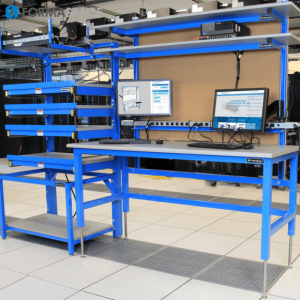We investigate if the Cyber Currency markets can change on their own, or whether they will be forced to switch to lower energy cost methods.
— Formaspace
AUSTIN, TEXAS, UNITED STATES, October 10, 2022 /EINPresswire.com/ — We live in a world where wasteful energy use is coming under greater scrutiny in nearly every sector, with regulators looking for new ways to cut carbon emissions –from restricting the future sale of gasoline cars to mandating better energy conservation in buildings and appliances.
Yet, as it turns out, cryptocurrency mining remains one of the world’s major energy consumers.
Can the Cyber Currency markets change on their own, or will they be forced to switch to lower energy cost methods? We investigate in this Formaspace technology report.
Analysts at the Cambridge Center for Alternative Finance (CCAF) reckon that each year crypto mining consumes just over 0.5 per cent of global energy production – e.g. about as much electricity as Sweden or Malaysia.
So far, cryptocurrency mining has been able to escape the growing reach of environmental regulations, but for how long?
It looks like the tide is turning.
In recent times, China had emerged as one of the world’s biggest havens for crypto mining operations – until the Chinese government cracked down on them to reduce the drain on the power grid and reduce China’s notorious air pollution problem.
In response, many large-scale crypto mining operations have begun relocating to areas with lower environmental regulations, such as Texas, which has recently become one of the leading centers for crypto mining since the Chinese crackdown.
But as the Texas electric grid struggles at times to satisfy growing demand and avoid outright catastrophic failures (such as during the February 2021 freeze that knocked the grid to its knees), regulators are looking for ways to reduce the burden that crypto mining puts on the power generation system.
Cyber Mining For Bitcoins: The Underlying Proof Of Work Algorithm
So how did we get into this situation, to begin with?
Let’s take a look at the OG of cryptocurrencies, which is Bitcoin, to explain.
To establish Bitcoin as a currency that operated outside the hands of administrators (or regulators, as critics maintain), there needed to be a way to issue new specie (e.g. coins) without flooding the market too quickly and tanking the value of the new Bitcoin.
The solution, crypto mining, is actually very clever.
In effect, it simulates the work done by miners digging into the earth to find gold nuggets.
And, like real gold mining, cyber mining is very competitive.
But instead of digging or panning for physical gold, each cyber miner tries to outcompete its rivals in performing “proof of work” algorithms, e.g. trying to come up with the right answers to complex mathematical problems – before its rivals can – and get rewarded with a shiny new coin as a result.
As you can imagine, the faster you can make the calculations for the mining problem, the more chances you have of coming up with the right answer.
To gain a competitive advantage, professional cyber miners have created huge data centers full of souped-up computing machines – equipped with powerful processors, heaps of memory, and advanced graphic card systems, all tuned to spit out as many plausible answers as fast as possible, in the hopes of beating the competition to win the next coin that is issued.
A Proof Of Work Alternative: The Ethereum Proof Of Stake
As time has passed and crypto mining has become more competitive, there has been an accelerated arms race to create the biggest and baddest crypto mining datacenters.
But this comes at a giant cost.
Neighbors living near these mining datacenters complain about the incessant roar created 24×7. Local utilities have to source more power and/or upgrade their supplies and reserves to serve the heavy power requirements these centers draw. And the environment suffers, as cyber mining has become, in the view of critics, a major source of unnecessary carbon emissions.
Julia Solodovnikova
Formaspace
+1 800-251-1505
email us here
Visit us on social media:
Facebook
Twitter
LinkedIn
![]()























